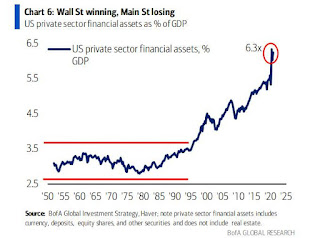--Russ Ballard
Well written piece by Glenn Greenwald on the left's escalating impulse to censor. Anything deemed 'disinformation' is worthy of censoring. As Greenwald observes:
"This 'disinformation' term is reserved for those who question liberal pieties, not for those devoted to affirming them. That is the real functional definition of 'disinformation' and of its little cousin, 'misinformation.' It is not possible to disagree with liberals or see the world differently than they see it. The only two choices are unthinking submission to their dogma or acting as an agent of 'disinformation.' Dissent does not exist to them; any deviation from their world view is inherently dangerous - to the point that it cannot be heard."
One question that Greenwald avoids is why? Although, as he notes, people on the right may occasionally be prone to censor, why is the need to squash opposing viewpoints a dominant trait of leftists?
A primary explanation can be gleaned from social identity theory. Social identity theory is grounded in the proposition that people derive self-esteem from belonging to groups, and that this need for affiliation influences behavior of group members.
It stands to reason that the need for group affiliation is not evenly distributed. We know, for example, that societies vary relative to their collectivistic tendencies.
Leftists, by definition, have a high collectivist preference. Their strong need for belonging and high levels of self-esteem realized from group attachment should motivate behavior that demonstrates loyalty to their group membership and disdain toward nonmembers.
Consequently, leftists should be likely to go to great lengths to defend group dogma. Members who question dogmatic beliefs are likely to be sanctioned, perhaps even excommunicated. Because members know this, they are likely to remain silent to prevent damage to their self-esteem.
Outsiders present a different problem, however. Because they have lower collectivist preference, outsiders perceive little or no penalty for contesting group dogma.
Recognizing that sanctioning is likely to prove ineffective against outsiders, leftists must resort to coercive tactics. lest the cognitive dissonance gets too great. Censoring, or forced silencing, is therefore employed in order to preserve group dogma against outside attack.
That's what we're seeing. Censoring may be more widespread today because leftists feel that they control more public and private machinery for silencing dissenting voices.
Whether such a tactic can be effective against a liberty-minded people remains to be seen. In fact, it seems straightforward to hypothesize that the more leftists attempt to silence dissent among freedom lovers, the louder the dissent gets.


















![[Most Recent Quotes from www.kitco.com]](http://www.kitconet.com/charts/metals/gold/t24_au_en_usoz_2.gif)


